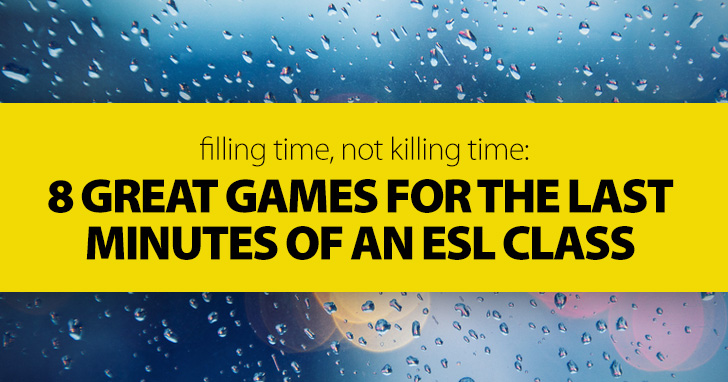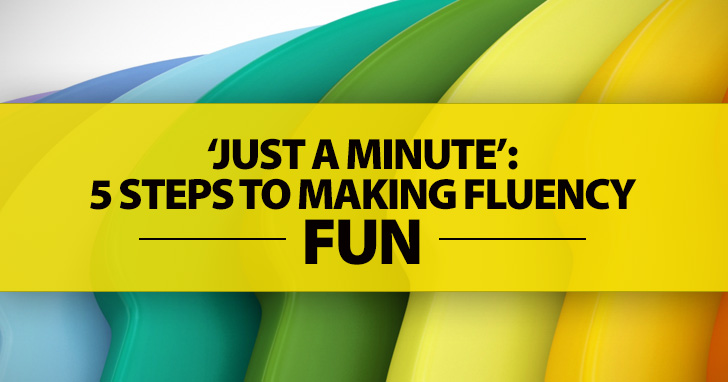Filling Time, Not Killing Time: 8 Great Games for the Last Minutes of an ESL Class


Legend has it that, back in the school days of the BBC radio quiz show creator Ian Messiter, he was caught daydreaming in class by a particularly stern teacher. Ian’s punishment was to repeat verbatim everything the teacher had said during the previous minute, without hesitating or repeating himself. History does not record how Ian fared in this embarrassing challenge, but it gave the young man an idea.
When the time came for Messiter to design radio quiz shows for the BBC, the thought resurfaced and became the format for a hugely popular game. The contestant would speak on a given subject for a full sixty seconds, “without hesitation, deviation or repetition”. Over eight hundred episodes later, Just A Minute has deserved popularity around the world, and it is wonderfully adaptable to the ESL classroom.
The BBC version is played by four contestants, a mix of regulars and invited guests. I’ve played this game in the ESL classroom by dividing the class into two teams and rotating through each team so that everyone has a turn. The game takes exactly one minute per student, plus set-up time between contestants. Here’s the procedure:

Divide the class into two teams in whichever way you prefer – based on seating, organized by age, nationality, ethnicity or gender, or using captains to choose their teams, etc.
Ask each team to prepare a list of subjects on which their opponents will have to speak for one minute. These should suit the level of your students. The best topics are those which challenge the students’ vocabulary without being too difficult. Good examples include:
Explain the rules and be ready to model the game for students who may not have seen it before. They must speak continuously for one minute. No long pauses are allowed, only those a presenter would normally take. They may not change the subject or repeat information or opinion; the opposing team can raise an objection if they feel this has happened, best done by raising a hand.
Every student should take part. The teams can organize themselves, or the teacher could choose the next contestant in whichever way works best. A large wall clock is useful to keep track of time. There’s no need to wait for the second hand to reach the top of the minute; you could announce that the contestant will begin speaking at the 30’ or 45’ mark, for example, and continue for sixty seconds.
Once the contestant has completed their minute, give them a score which will be tallied on the board. I’m very generous with this, giving 10/10 to anyone who doesn’t break the rules. If there’s some pausing, or the student repeats a thought, consider giving them an 8/10 or 9/10. You might give bonus points for especially good choices of vocabulary or particularly effective use of a tricky grammar point.
While the students are speaking, their classmates (of both teams) should respectfully listen. During this time, the teacher can silently encourage the speaker, especially if they are of a lower level. Nodding, smiling and using a range of ‘keep going!” gestures has had good results. If they really hit trouble, the teacher could drop in a hint – an aspect of the topic the student has yet to cover, or a piece of vocabulary which might unlock a few more seconds of speaking.
Just A Minute has been an instant favorite with virtually every group to whom I’ve introduced it. Everyone faces the same challenge, and it’s a good chance for students to support and encourage each other while working to achieve the objective of winning the game. Though simple, this format has many positive aspects: